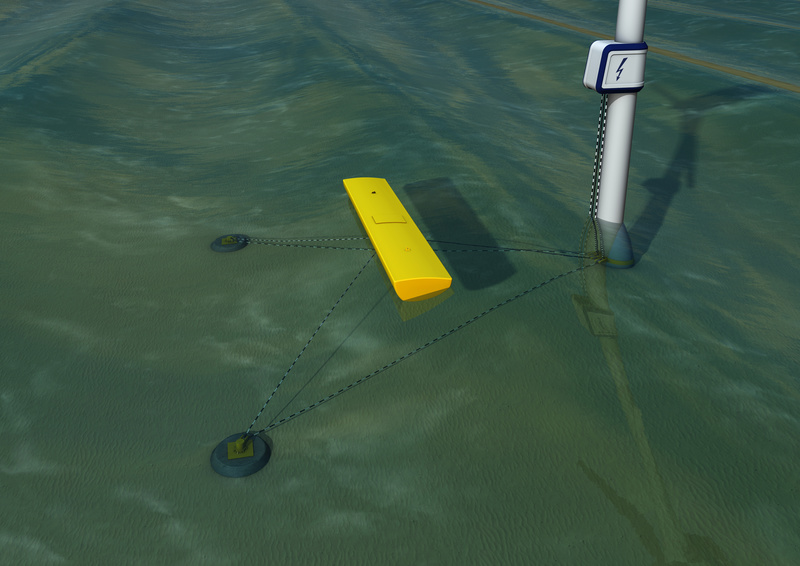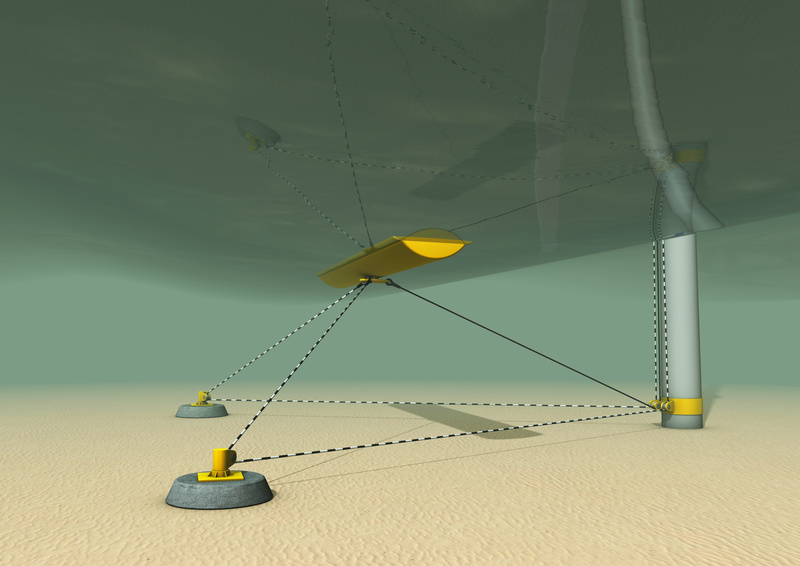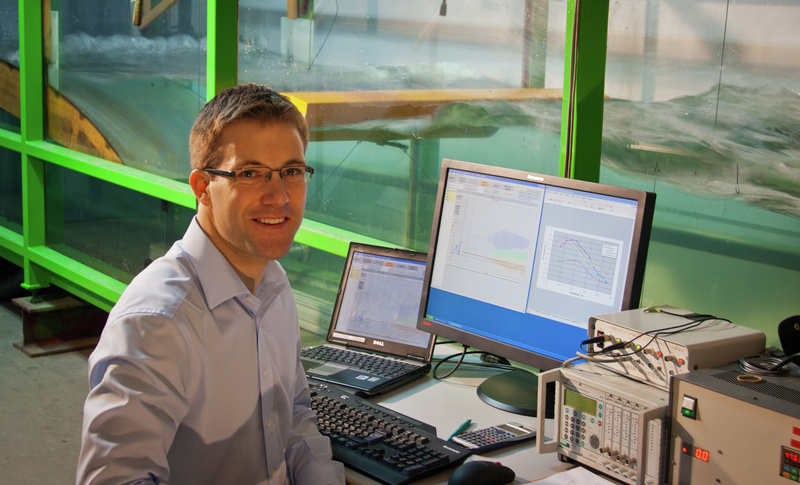News Release from windfair.net
Wind Industry Profile of
Offshore Wind Farms: New Technology for more Revenue
NEMOS is the name of the project, which is funded by the Federal Ministry of Economy amongst other companies. NEMOS – in German - stands for 'use of the energy potential of ocean waves in offshore wind farms to produce electricity' and at the same time describes the idea behind the project.
Usage of Wave Energy
Many different companies around the world are currently working to harness the power of the sea in order to gain energy. But so far the focus was mainly on the use of wave energy in estuaries.
Meanwhile, the offshore wind energy industry expanded massively at sea, especially in Europe. And everywhere on the foundations of the turbines, the water breaks and waves arise. As early as 2010, researchers at Stanford University were able to prove that when coupled with wave energy an offshore wind farm is able to produce about 20 percent higher yields like a conventionally used offshore wind farm. In addition, the existing infrastructure such as cables and substations would be better utilized, thereby reducing the cost for the transport of energy towards the shore.
In addition, a more continuous electricity production would be possible, because the yield curve of wave energy in an offshore wind park will last longer than wind energy: It takes a while for the waves to arise after the wind starts to blow and the turbines start to produce wind energy. But after the wind stops and wind energy production fades, the waves will continue to rush for a while meaning the temporal phases in which electricity can be produced and transported ashore are extended.

The NEMOS Project
Jan Peckolt wants to take advantage of this. The Olympic medalist in sailing (Bronze medal 2008 in Beijing, 49er dinghy) and industrial engineer is responsible for the idea behind NEMOS: The NEMOS systems each consist of an elongated lifting body, which is braced with ropes in the seabed. The waves inside the offshore wind farm move the body and transfer mechanical energy via cable to a generator, which in turn is attached to the tower of a wind turbine. As the wind and thus the direction of the waves rotate, the swimming body can follow the movement and is therefore more flexible than a conventional system in which the body moves only vertically. In result, this allows the use of more than 80 percent of the wave energy for driving the generators (as compared to 50 percent on the vertically moving bodies). In case of a storm, when the waves are too harsh for the material and the risk of a collision with the turbine increases, it is possible to lower the NEMOS systems down to calmer water depths, so they will not be damaged.

Underwater view of the plant
Benefits of the System
Besides the already mentioned longer period of electricity production in the offshore farms, the NEMOS systems are not particularly expensive. The use of a rope linkage means relatively little material. Another problem with many projects in the industry of wave energy is entirely bypassed: The sensitive components of the generator are not in the water and therefore are not directly exposed to corrosive salt water, which significantly reduces maintenance costs. The fact that the body is transverse to the shaft direction means it has a high effective width, which leads to higher yields.

Jan Peckolt in front of the water tank
Current Status of the Project
The project was launched in 2012. After intensive computer calculations, operating and implementing concepts for the materials used were developed before a prototype has been built which should prove its practicality in long-term tests in saltwater. Late last year, this prototype was finally tested in the French city of Nantes in different tests in one of the world's largest water tanks. Since early last week, the NEMOS plant of the scale of 1:5 was put into fully automated operation in Danish Nissum Bredning and produced its first energy that has already been fed into the Danish power grid. Peckholt clarifies on how to proceed to the magazine 'Fluid':“The installation of the first plant in full size is planned for the coming year in the Danish North Sea. This year we are testing another 1:5 device in open water to collect more experience and to practice the automatic operation in this small, easy-to-scale plant.”
Depending on the location a turbine can be provided with up to five of the floats and generate up to 1MW additional power. This would make offshore wind farms produce even more electricity than they already do and further enhance their profitability.
Wave energy converter from Jan Peckolt on Vimeo.
- Source:
- NEMOS
- Author:
- Katrin Radtke
- Email:
- kr@windmesse.de
- Link:
- www.nemos.org/...

